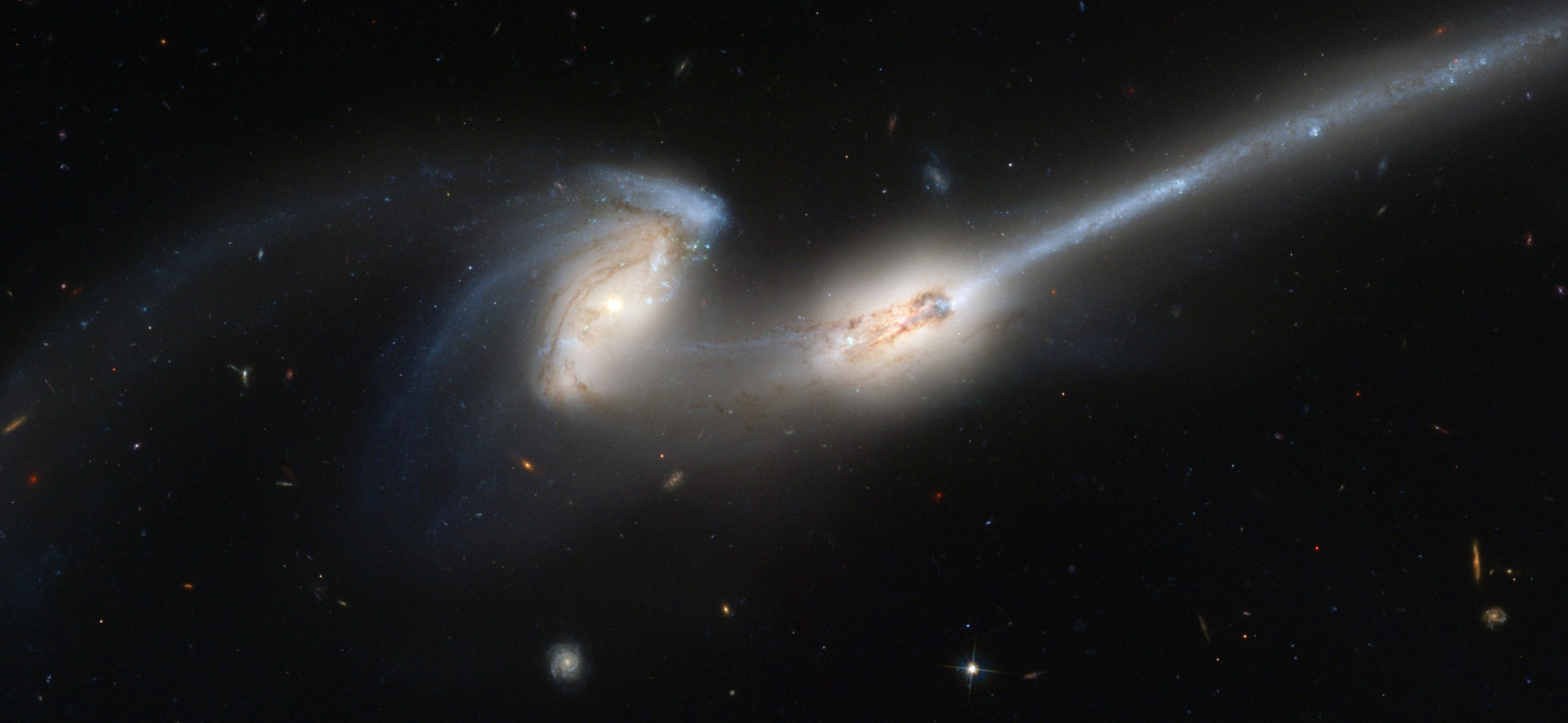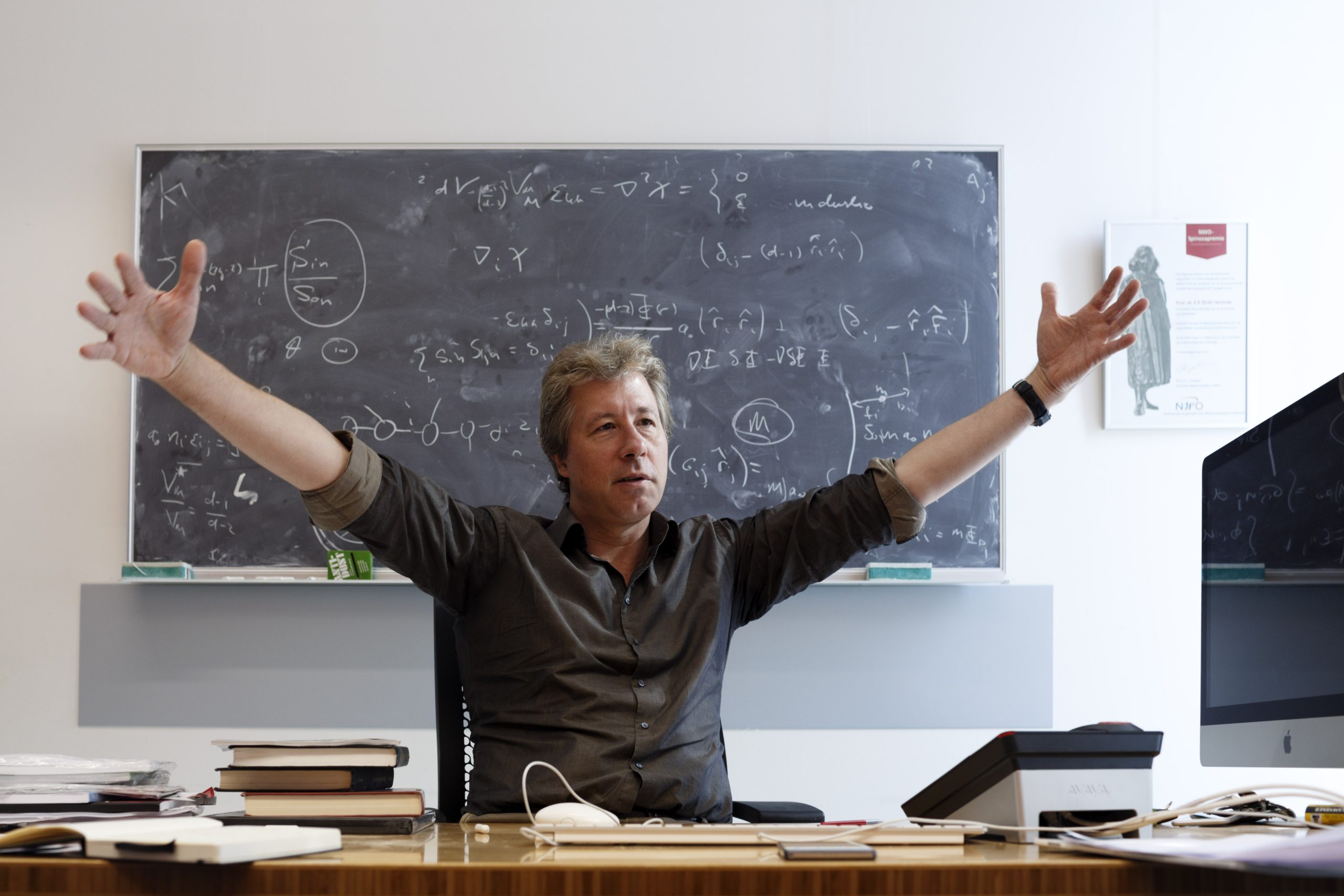Physicist Erik Verlinde (UvA) shook up the physics community with his new theory of emergent gravity, an adaptation of the current gravitational laws of Newton and Einstein. On invitation by the VvTP, Verlinde will give a public lecture in the Aula on Tuesday March 8th.
Erik Verlinde. (Photo: Bob Bronshof)
Professor Verlinde’s speech will be the keynote speech at the symposium Physics in Space (5 to 9 March 2018) organised by the TU Delft study association for applied physics. Other speakers include TU Delft researchers Professor Daphne Stam (Aerospace Engineering) and Dr Akira Endo (EEMCS and SRON).
Verlinde’s publication ‘Emergent Gravity and the Dark Universe’ sent shock waves through the physics community in November 2016 because of its originality and its far-reaching implications. His theory explained both the accelerated expansion of the universe – caused by dark energy – and the extra gravity that is observed at the edge of galaxies, which is commonly attributed to the mysterious ‘dark matter’.
Job van der Linden, president of the symposium committee, says he consciously looked for a physicist outside the Applied Physics domain. The committee thought of Brian Cox and Stephen Hawking, but ultimately decided to invite Erik Verlinde. By choosing a topic outside the Delft curriculum, the talks will be more general and more accessible for outsiders, argues Van der Linden.
Quantum gravity
Gravity is what keeps our feet on the ground. It makes the earth roughly spherical and makes our planet orbit around the sun. Without gravity, our world would look completely different. And yet, of the four fundamental forces of nature, gravity is the least understood. There are no fewer than three problems associated with our understanding of gravity. To start with, scientists do not fully understand how gravity behaves at a microscopic scale, a field known as quantum gravity.
The second problem originates in cosmological observation. In 1998, two independent teams of astronomers came to the conclusion that our universe is experiencing accelerated expansion. This discovery came as a great surprise to many physicists. After all, gravity is a force that attracts, which should actually slow down the expansion of the universe.
To be able to explain the phenomenon of repulsion, it had to be assumed that empty space contains an enormous amount of energy. Such energy, also known as dark energy, can be seen as the energy of the vacuum. It constitutes no less than 69% of the total amount of energy in the universe.
Dark matter
The third problem arises from the observation that the speed at which stars at the edge of galaxies rotate around the centre is much greater than expected on the basis of the visible matter in the galaxy. According to Newton’s theory of gravity, the speed at which distant objects rotate around a large mass concentration reduces with the distance to the centre. Astronomers observed, however, that the rotation speeds in the outer regions of many galaxies and clusters actually remain the same or even increase.
Apparently, they are being pulled harder by the visible mass than might be expected. So where does this additional attracting force come from? Most researchers attribute this additional gravity to dark matter – matter consisting of particles that remain unknown. And here, too, the effect is enormous: the universe should contain about five times as much dark matter as ordinary, visible matter. This awareness has led to an ongoing search for particles, either directly or indirectly, that could make up dark matter.


How should we tackle the problems of quantum gravity, dark matter and dark energy? Seeing that all these issues concern the nature of gravity, it is conceivable that they are ultimately interrelated. We might have to change our views about gravity itself in order to throw light on the whole range of problems. And this is precisely what Erik Verlinde proposes with his new theory of ‘emergent gravity’.
-
More information on Verlinde’s lecture, organised by VvTP and Studium Generale
-
Read more on Verlinde’s theory on the quantum universe website
-
An earlier lecture (2011) on Collegerama
Do you have a question or comment about this article?
j.w.wassink@tudelft.nl


Comments are closed.